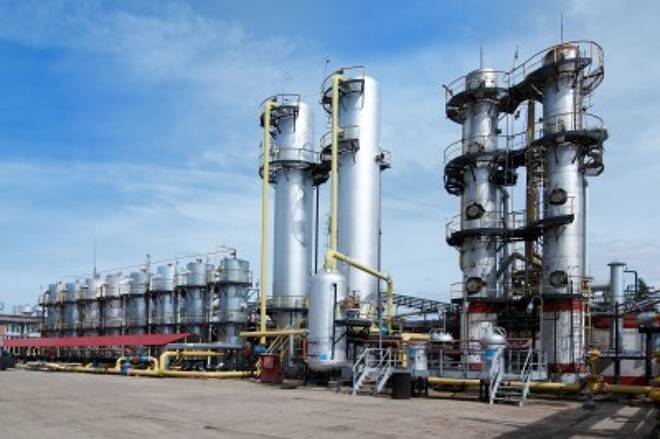Advertisement
Advertisement
Natural Gas Price Prediction – Prices Tumble on Warm Weather Forecast
By:
Natural gas prices tumbled again on Friday, breaking through support levels and poised to test trend line support. Prices were down nearly 7% going into
Natural gas prices tumbled again on Friday, breaking through support levels and poised to test trend line support. Prices were down nearly 7% going into the last hour of trading on Friday. Warmer than normal weather is forecast to cover most of the United States for the next 2-weeks which weighed on natural gas prices. The decline in prices comes despite inventory levels that are below the 5-year average range for this time of year.
Technicals
Natural gas prices tumble breaking through support near 3.99 which is now seen as short-term resistance. Support is seen near an upward sloping trend line that comes in ear 3.5. Additional resistance above 3.99 is seen near the 10-day moving average at 4.31. Momentum is negative as the MACD (moving average convergence divergence) histogram prints in the red with a downward sloping trajectory which points to lower prices.
Withdrawals Continue to Decline
Net withdrawals from working gas storage fell below the five-year average for the first time in five weeeks. Net withdrawals from storage totaled 77 Bcf for the week ending December 7, compared with the five-year average net withdrawals of 79 Bcf and last year’s net withdrawals of 59 Bcf during the same week. Working gas stocks totaled 2,914 Bcf, which is 723 Bcf lower than the five-year average and 722 Bcf lower than last year at this time.
Working gas stocks’ deficit to the five-year average decreased, and the deficit to the bottom of the five-year range increased. In the Lower 48 states, total working gas stocks are 427 Bcf lower than the five-year minimum, and every storage region is currently lower than the bottom of its five-year range. The deficit to the bottom of the range increased in all regions except the Pacific and South Central salt regions. As of this report week, the Midwest region is 58 Bcf (6%) lower than the five-year minimum, and the South Central region including both salt and nonsalt facilities is 182 Bcf lower than the five-year minimum.
About the Author
David Beckerauthor
David Becker focuses his attention on various consulting and portfolio management activities at Fortuity LLC, where he currently provides oversight for a multimillion-dollar portfolio consisting of commodities, debt, equities, real estate, and more.
Did you find this article useful?
Latest news and analysis
Advertisement
